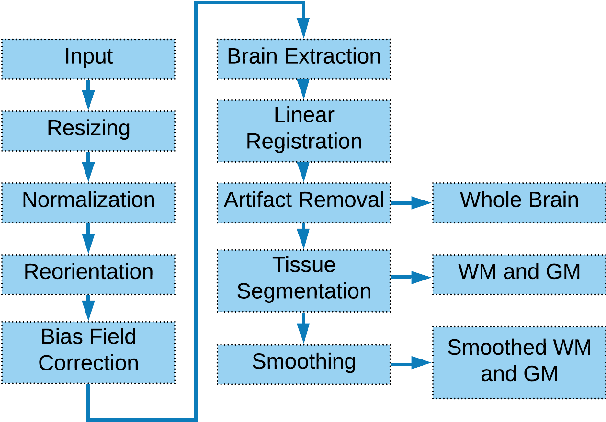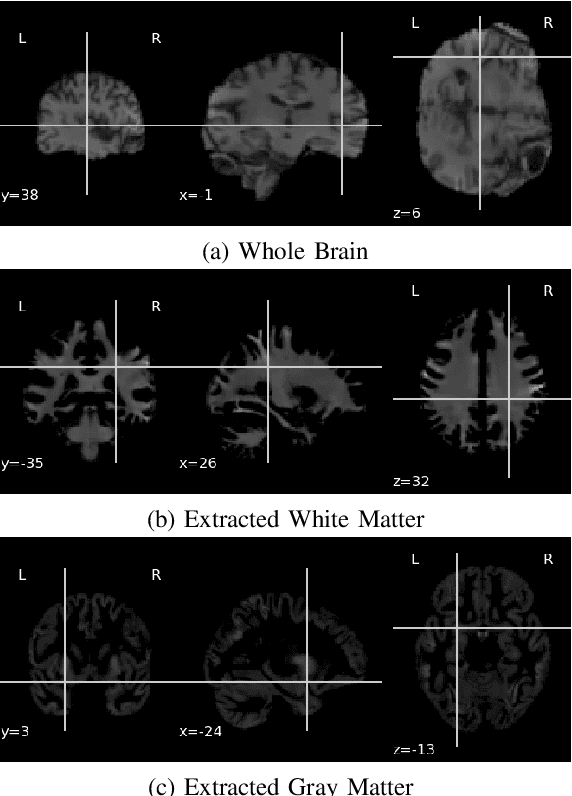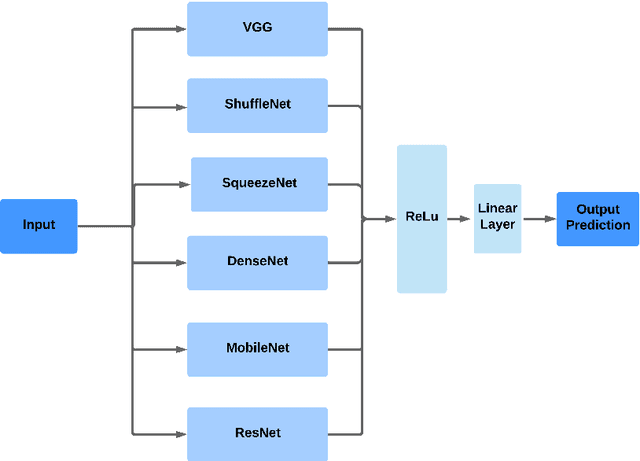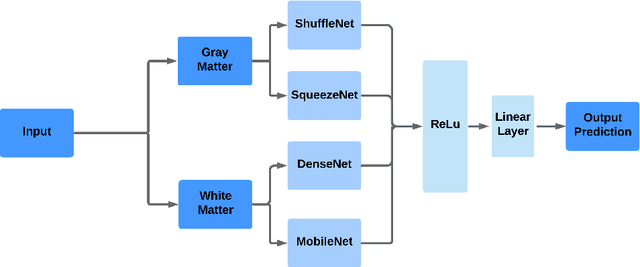Tahjid Ashfaque Mostafa
Parkinson's Disease Detection with Ensemble Architectures based on ILSVRC Models
Jul 23, 2020



Abstract:In this work, we explore various neural network architectures using Magnetic Resonance (MR) T1 images of the brain to identify Parkinson's Disease (PD), which is one of the most common neurodegenerative and movement disorders. We propose three ensemble architectures combining some winning Convolutional Neural Network models of ImageNet Large Scale Visual Recognition Challenge (ILSVRC). All of our proposed architectures outperform existing approaches to detect PD from MR images, achieving upto 95\% detection accuracy. We also find that when we construct our ensemble architecture using models pretrained on the ImageNet dataset unrelated to PD, the detection performance is significantly better compared to models without any prior training. Our finding suggests a promising direction when no or insufficient training data is available.
Parkinson's Disease Detection Using Ensemble Architecture from MR Images
Jul 01, 2020



Abstract:Parkinson's Disease(PD) is one of the major nervous system disorders that affect people over 60. PD can cause cognitive impairments. In this work, we explore various approaches to identify Parkinson's using Magnetic Resonance (MR) T1 images of the brain. We experiment with ensemble architectures combining some winning Convolutional Neural Network models of ImageNet Large Scale Visual Recognition Challenge (ILSVRC) and propose two architectures. We find that detection accuracy increases drastically when we focus on the Gray Matter (GM) and White Matter (WM) regions from the MR images instead of using whole MR images. We achieved an average accuracy of 94.7\% using smoothed GM and WM extracts and one of our proposed architectures. We also perform occlusion analysis and determine which brain areas are relevant in the architecture decision making process.
 Add to Chrome
Add to Chrome Add to Firefox
Add to Firefox Add to Edge
Add to Edge